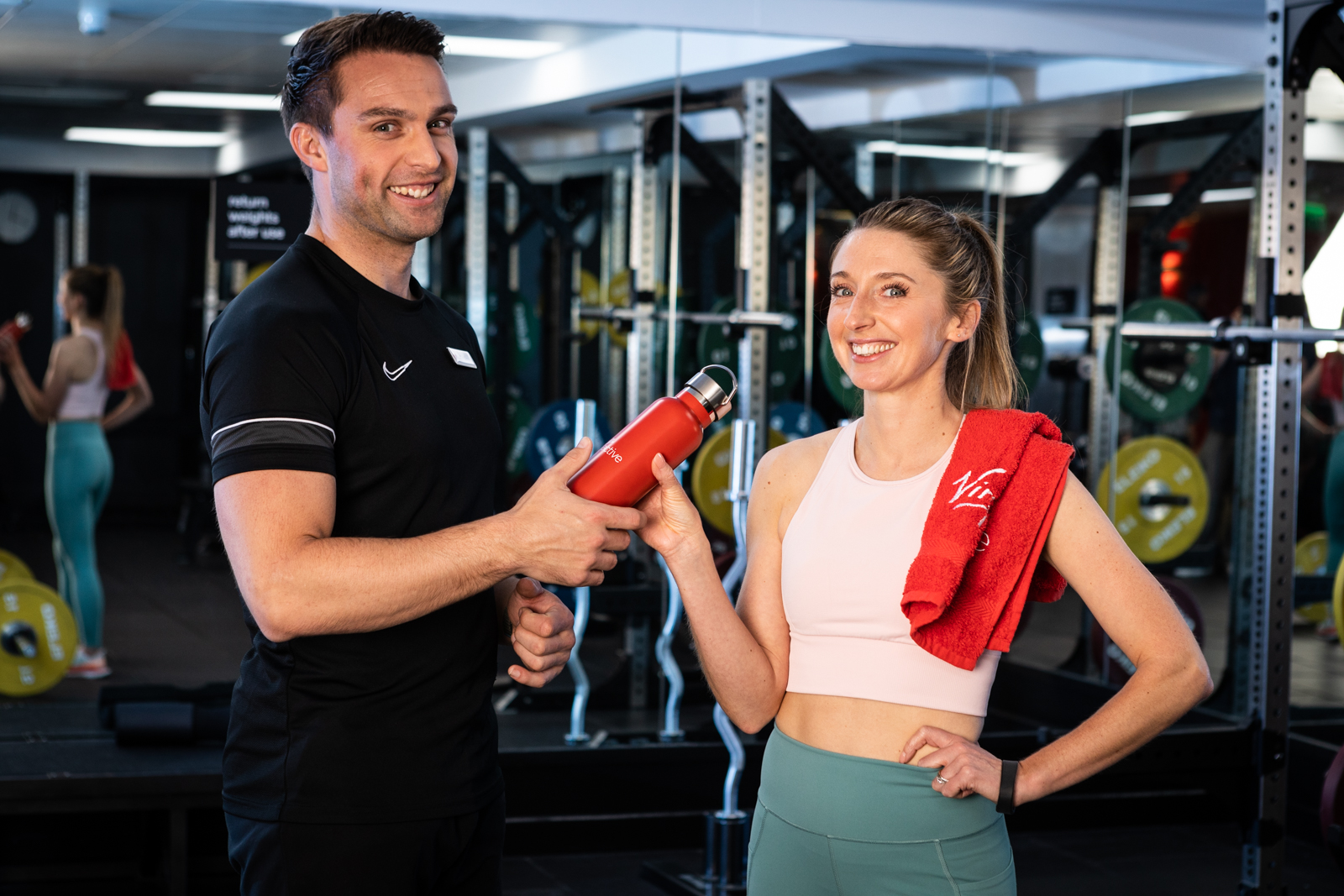Top tips for hydration

It's always important to prioritise hydration for overall wellbeing. As the body is made up of around 60% water (which may vary dependent on several factors), sufficient hydration is essential for maintaining healthy body functions, promoting cognitive performance, regulating body temperature, and supporting digestion.
Just like energy balance, there is a balance between fluid consumed and fluid lost from the body, called fluid balance. To stay hydrated, daily fluid consumption and fluid losses must be equal. We are at a higher risk of becoming dehydrated in the warmer climates due to increased rates of sweating from the higher temperature and humidity.
You might notice that you’re dehydrated if:
Drink plenty of water
Water is the primary source for hydration and should be your go-to this summer, as opposed to high sugar/fizzy drinks. How much water you drink is different for each individual, and is based on factors such as physical activity, training status, habitual fluid intake and environmental conditions. Yet, guidelines suggest that daily intake should be 3.7 L (6.5 pints) for sedentary males, and 2.7L (4.75 pints) for sedentary women. Water needs are considerably higher for physically active individuals, with some athletes requiring over 6 L.
Carry a reusable bottle with you, everywhere
This is easiest way to keep drinking water throughout the day is to grab yourself a bottle, trust us you won’t regret it. Drinking fountains have become more available and it will encourage you to continue sipping throughout the day. Carrying a water bottle will also avoid prolonged periods without drinking.
Eat high water content food
High water content foods also contribute to daily fluid intake. High fluid foods include watermelon, tomatoes, cucumber, apples, celery, peaches, strawberries, pineapple, oranges, bell pepper, courgette and leafy greens. These foods contain a high-water content and provide additional nutrients and fibre. Don’t forget to add some of these to next week’s food shop!
Limit diuretic beverages
Drinking too much alcohol or caffeine can contribute to dehydration due to their diuretic effect. The increased urine production encourages the body to remove more fluid than usual, which is why it is important to monitor the amount you drink and ensure you are still drinking enough water to avoid dehydration. The higher alcohol percentage of a drink, the more dehydrating it is.
Set hydration reminders
It’s easy to forget to drink regularly when you’re busy. Setting reminders or using hydration tracking apps prompt you to drink water regularly. These are particularly helpful in the initial stages of behaviour change until drinking water regularly becomes a habit and part of your routine.
Buy a water bottle with timings on
Similar to the phone reminders, the visual cue on the water bottle reminds you to have drunk a certain amount of water by a certain time. This also helps to establish good hydration habits throughout the day.
Drink flavoured and cool water
If plain water seems boring, try infusing water with fresh fruits, herbs, or sugar-free squash to increase your drinking. The appeal of flavoured or chilled water increases fluid consumption by providing a pleasant taste that encourages you to drink. Try combinations such as lemon and mint, cucumber and basil, or strawberry and lime, whatever it takes to keep you drinking!
Choose an electrolyte or salty snack if you sweat a lot
Electrolytes are molecules that have a positive or negative charge, such as potassium or sodium. Potassium is found in the intracellular fluid, whereas sodium is found in the extracellular fluid. During exercise or in higher temperatures, we sweat out water and sodium which interrupts our electrolyte balance. To restore the balance between intra- and extracellular fluids and to keep you hydrated, a drink containing sodium may be required.
Monitor urine colour
This is the easiest way to monitor your current hydration status. Aim for a pale, straw-coloured urine, which suggests good hydration. Dark urine may indicate dehydration, warning you to increase your fluid intake. Note: if your urine is completely clear, it could indicate that the water you’re drinking is passing through your body without being properly absorbed into your cells. In these cases, consider including an electrolyte or salty snack with water to replace the sodium levels and help keep you hydrated.

